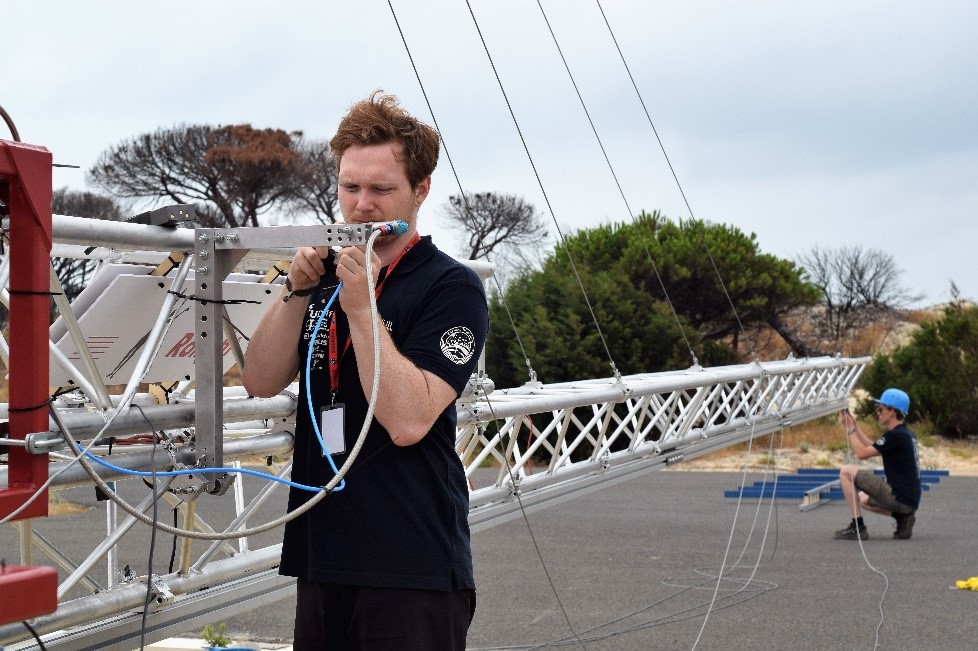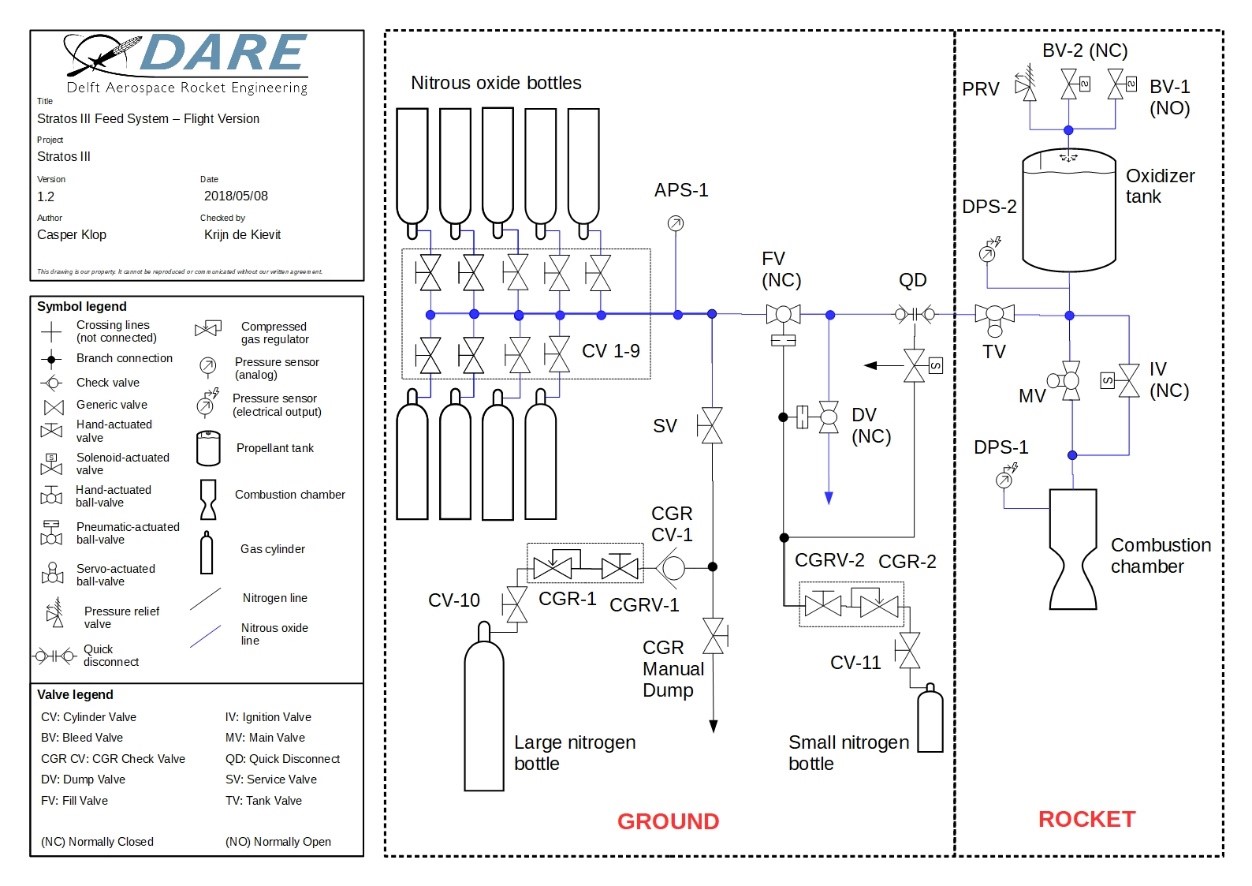
To fill up your car with fuel you just go to your nearest petrol station. Unfortunately, it is a bit harder for a rocket. In this post we will explain a bit how the Stratos III engine works and how we fill it.
Stratos III uses a hybrid propulsion system which has a solid part as well as a liquid. Our fuel is solid and consists mostly of sorbitol, with the addition of paraffin and aluminium. The fuel acts a lot like a candle but there’s one small difference. A candle only burns on the surface where the solid part liquefies on the surface and mixes with the oxygen in the air. However, Stratos III, contrary to a candle, has to work without any oxygen from the air.

Jonas working on filling arm with the quick disconnect valve on it. The filling arm will fill the rocket and retract itself so during filling operations nobody will have to come close to the rocket anymore.
To supply the oxygen for the reaction we use N2O, commonly known as laughing gas or nitrous oxide. This gas has been kindly provided to us by Air Liquide. This gas is a strong oxidizer under high temperatures just like oxygen and a compressed liquid (meaning it is liquid under pressure). In order to rise the pressure to the desired value of 60 bars, we use infrared lamps that heat up the oxidizer tank which increases the pressure.
Take a look at the picture above. It explains the set-up of the feed system – the system that allows the oxidizer to flow from the flight tank to the combustion chamber of the engine. The nitrous oxide is first stored in 9 large bottles on the ground. Then, the oxidizer travels through multiple valves to eventually end up in the tank. In case the pressure of the oxidizer gets too high, there are so-called bleed valves that will release some of the oxidizer, reducing the amount of nitrous in the tank and thus lowering the pressure. When we start up the engine, a very small bit of the nitrous will pass through the ignition valve in order to start combustion, without blowing out the rocket like the previously mentioned candle. When the chamber temperature goes up, the majority of the oxidizer will travel through the main valve during the entire burn of the rocket.
If you would like to see how a burning engine actually works check out our YouTube channel for many many videos of engine tests like this one. And of course don’t miss the launch of Stratos III to see the engine propel a real life rocket! Our first launch attempt is planned for the 20th of July at 20:00 CEST and it will be live streamed on our Facebook and YouTube so make sure to watch it!
by Rolf Wubben & Jeije van den Wijngaart

